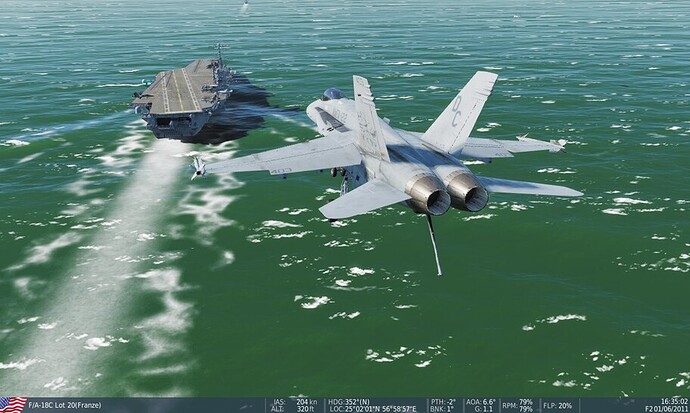Alright, I’m sure everyone knows about this, but my experience is as follows:
I started with a cold start mission to test a few things:
I was doing this for about ~45mins, practicing landings, air refueling, fiddling around with the BIT page (I used some “Start, ya bastige!” spray on the page to no avail; I clearly don’t have full understanding of all the fiddly bits yet), only to find that my track is fairly corrupt – positional error or altitude error or some such. Around the time I start to line up for landings, my aircraft on the track goes right into the drink, sometimes early on or sometimes later, so I figure the track must be too long or I’m abusing the time warp too much.
So rather than go through it all again, I load up the Cat I carrier landing mission and go from there:
OK, things are a bit different now. Feels like I’m flying with hydrogen/helium in the tanks, not loaded weight. Follow the instructions for full flaps, etc. but I’m just too dang high:
Abort this approach, come back around again, this time setting flaps to auto. I don’t like those speed numbers… Used to coming in at ~250.
Missed the wire!
On follow up, determine that I really need to lose some speed and alt, so I tone back my approach to ~200kts and lose a bit more altitude.
That does the trick, though I’m not happy that I caught the 3 wire… I had been catching the 1 wire earlier, so my technique clearly needs work.
Conclusions: since I’ve been adjusting to taking off and landing with 40-45,000lbs weight, I got used to needing to having more power and coming in a bit sharper than lightly loaded. When loaded in the above scenario, I have a tendency to come in too hot and high. I don’t know if it’s better to practice with a typical combat load or go light. Most of all, I probably need to practice at night and in adverse conditions, in order to shake my habit of trusting my eyes and not the instruments.








